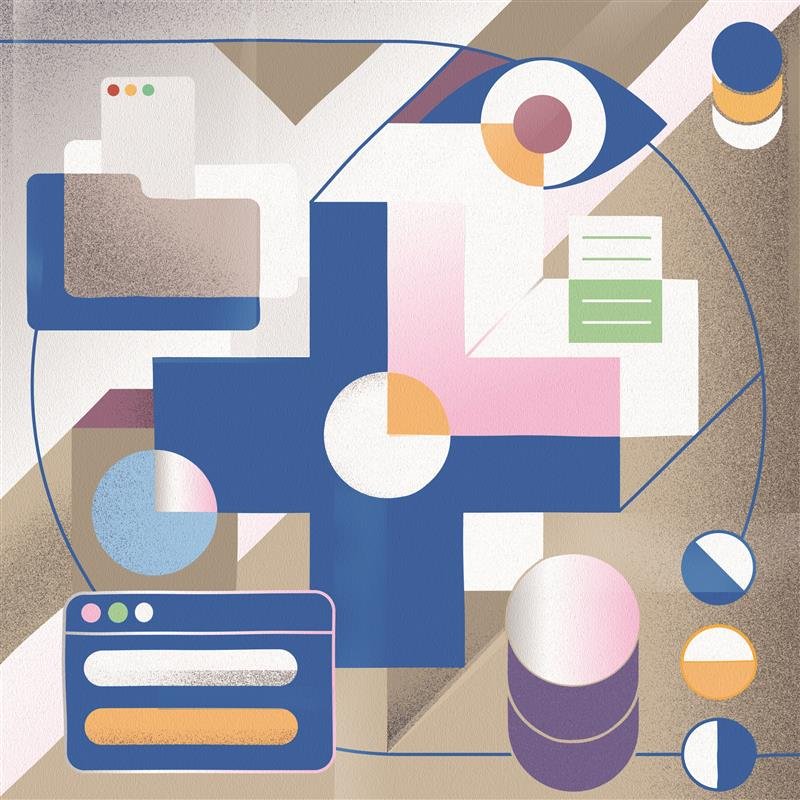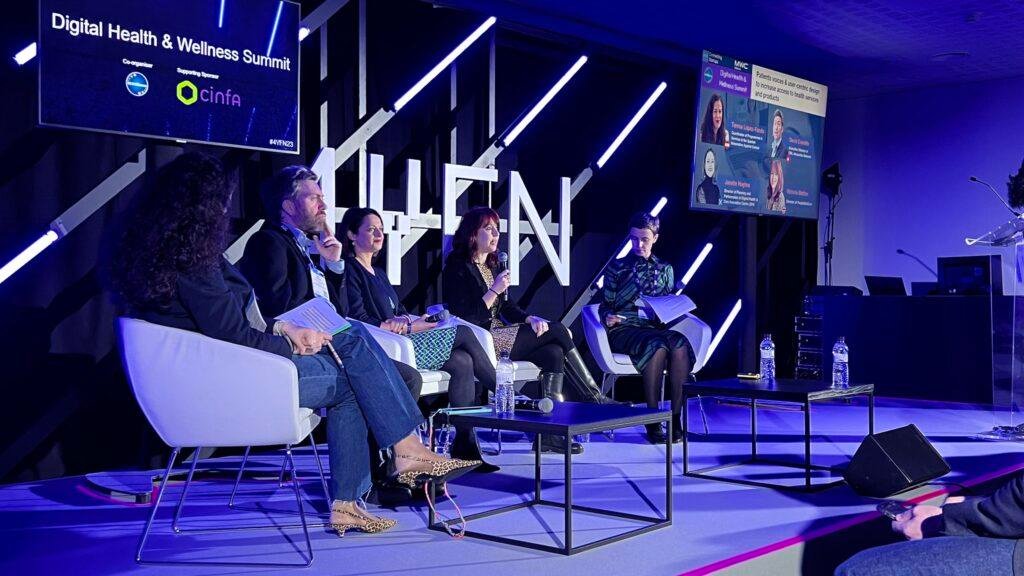As the famous quote from Bill Gates says:
“We always overestimate the change that will occur in the next two years and underestimate the change that will occur in the next ten”.
Once hailed as revolutionary, the traditional monolithic Electronic Health Record (EHR) systems now show limitations. These mega suites were designed to serve as comprehensive solutions, from patient records to billing and analytics, and often struggle to meet the diverse needs of healthcare providers, leading to inefficiencies, high costs, and limited flexibility. Enter the Postmodern EHR—a new paradigm that combines stability with flexibility, innovation, and improved outcomes.
Acknowledging that incumbent systems are (almost) impossible to replace, the latest model offers a transformative alternative. It enables organisations to extend their legacy systems with modular, interoperable solutions that align more closely with their clinical and operational goals. Here we explore the concept, benefits, and reasons why it is being adopted by some of Europe’s leading healthcare institutions.
The need for change
“If you do not change direction, you may end up where you are heading.”
— Lao Tzu
The underlying reasons for change are still the same as when I started writing about a new approach ten years ago, but as the installed legacy software is that much older, the problem is much worse. Coupled with the increasing need for more and better data to explore opportunities with AI, demands of empowering patients with access to data, and a shift of focus from hospitals to regions requiring person-centred records, we are headed for a perfect storm.
Healthcare CIOs are also facing increasing pressure to respond, as the following slide from the Gartner Group sums up:

Continuing to rely on existing approaches will not solve the issues above. Healthcare needs to move beyond traditional EHRs to:
1. Address the limitations of monolithic systems
Traditional EHRs, while integrated, often come with significant drawbacks:
- Lack of customisation: They struggle to cater to different medical specialities’ unique workflows and needs.
- High costs: Monolithic systems’ implementation, maintenance, and upgrades are expensive and time-consuming.
- Vendor lock-in: Providers can become dependent on a single vendor, limiting their ability to innovate or switch to better tools.
- Interoperability challenges: Data silos and poor communication between systems hinder effective care coordination.
These limitations can negatively impact both provider efficiency and patient outcomes.
2. Respond to the demand for innovation
Healthcare is rapidly evolving. Emerging technologies like artificial intelligence (AI), telemedicine, and remote monitoring require systems that can adapt quickly. A Postmodern EHR architecture supports innovation by allowing healthcare providers to:
- Integrate cutting-edge tools without waiting for monolithic EHR vendors to develop similar features.
- Experiment with new technologies in a controlled manner, adding or replacing modules as needed.
3. Enhance the user experience
Clinician burnout is a growing concern, with EHR usability often cited as a significant contributor. Postmodern EHRs prioritise user-centric design by enabling role-specific interfaces and workflows. This tailored approach reduces cognitive load, streamlines documentation, and improves overall satisfaction.
What is the Postmodern EHR?
When looking to implement or upgrade their existing IT infrastructure, leaders are faced with a choice between purchasing a monolithic mega-suite or adopting a best-of-breed approach. Each has its advantages and challenges.
Almost ten years ago, I described a hybrid approach that combined the benefits of the mega-suite and best-of-breed applications. I named the concept the Postmodern EHR and wrote several blog posts on the subject.
The architecture consists of existing (or new) EHR and best-of-breed, pre-integrated applications based on a standard, vendor-neutral common data layer (CDL). In addition, new applications are built faster using a low-code approach, while UX consistency is achieved by adding a design system. The legacy EHR surrenders data to the CDL while low-code applications (or forms) built on top of the CDL can be embedded into the EHR front-end, creating a seamless user experience and a patient-centric care record at the same time.
Recently, Gartner described a new software category, the Digital Health Platform. This category includes a vendor-neutral data layer, low-code application-building tools, and a composable UX layer. It is a perfect fit for the Postmodern EHR architecture.
What are the key benefits?
As mentioned above, the best-of-breed approach and purchasing a megasuite each have advantages. The Postmodern EHR aims to combine the best of both worlds.
As healthcare organisations transition to a Postmodern EHR model, two key challenges emerge: integration complexity and data governance. The vendor-neutral Common Data Layer (CDL)—a centralised repository or platform that standardises and unifies data across all best-of-breed applications—effectively mitigates these issues. A CDL also provides a single point of validation, access control, and auditing, increasing data quality and improving governance.
1. Flexibility and agility
Healthcare organisations can quickly respond to:
- Regulatory changes: Easily adapt systems to comply with new laws or standards.
- Market demands: Implement tools that meet evolving patient expectations, such as mobile health apps.
- Clinical needs: Support specialised departments with best-of-breed solutions tailored to their workflows.
2. Improved interoperability and data sharing
Using open standards like HL7 FHIR for exchange and openEHR for persistence, a Postmodern EHR ensures that data flows seamlessly between systems, supporting:
- Better care coordination: Providers across organisations can access and share patient information in real time.
- Population health management: Aggregated data enables more effective tracking and intervention at a community level.
3. Cost efficiency
By adopting a modular architecture, healthcare organisations can:
- Avoid enormous upfront costs: Invest in only the modules they need.
- Reduce maintenance expenses: Update or replace individual components without overhauling the entire system.
- Negotiate better terms: Minimise dependence on a single vendor, fostering competitive pricing and service quality.
4. Long-term data integrity
A common data layer (CDL) ensures that clinical data remains consistent and accessible, even as applications evolve. This setup supports:
- Longitudinal patient records: Maintaining a comprehensive health history over time.
- Advanced analytics: Leveraging structured, high-quality data for predictive modelling, decision support, and AI.
- Secondary use: Comprehensive, high-quality health data facilitates research.
5. Reduced vendor dependence
The Postmodern EHR frees healthcare providers from the constraints of a single vendor. This promotes:
- Innovation: Providers can adopt the latest solutions without being tied to a specific ecosystem.
- Resilience: The ability to switch vendors or applications without losing access to critical data or functionality.
6. Reduced risk
EHR implementations are complex, high-risk projects. The Postmodern EHR approach reduces risk by:
- Complementing the legacy EHR: New functionality is added while not disrupting the existing EHR infrastructure.
- Phasing the transition instead of a big-bang rollout allows organisations to start small and deliver value quickly before implementing the next step.
Why now?
As mentioned above, the Postmodern EHR concept is not new. Several factors contributed to the fact that we are now seeing leading European care providers adopting this concept: increasing pressure to modernise, lack of suitable offerings from existing vendors, and the increasing need for patient-centric health records for analytics, AI, and patient empowerment. Finally, the emergence of digital health platforms counterbalances the EHR in modern IT architectures.
Gartner Group supports this view:
By 2027, healthcare provider CIOs will deploy over 50% of new healthcare-specific capabilities via digital health platforms to directly address critical outcomes.
We are already seeing this in the market. Leading providers like The Christie NHS Foundation Trust, Karolinska University Hospital, and Basel University Hospital have recently embraced the Postmodern EHR. There are differences in approach, but they all complement their EHR with a digital health platform as described above. They are building a patient-centric longitudinal care record based on openEHR, adopting low-code to accelerate delivering value and embedding newly built or bought application front-ends into existing EHRs and portals to ensure a seamless user experience. All have recently procured the Better Digital Health Platform. The Christie is modernising their home-built clinical applications, while Karolinska and Basel are considering a new EHR to replace their legacy EHR system. In addition, they will use the platform to migrate data from the legacy EHR while implementing the new system.
New modular open platform architecture at the Karolinska University Hospital

A new era for EHRs
The Postmodern EHR is more than a technological framework; it represents a new way of thinking about healthcare IT. By combining legacy EHR systems with modularity, interoperability, and vendor neutrality, healthcare providers can unlock greater flexibility and innovation while preserving stability. The benefits are clear: reduced costs, improved user experience, and better patient outcomes.
The shift may require bold leadership and a willingness to challenge the status quo, but the rewards are well worth the effort. The Postmodern EHR is not just the future of healthcare IT—it is the present, and it is already transforming how care is delivered at world-leading, data- driven institutions like The Christie, Karolinska University Hospital, and Basel University Hospital.
Discover more about Better:
Better is a leader in digital healthcare solutions, transforming healthcare systems worldwide with its innovative products. Our mission is to improve health and care by simplifying the work of care teams and accelerating digital transformation. Our open digital health platform, Better Platform, serves as the foundation for modern healthcare ecosystems. By making data structured, vendor-neutral, and available for life, it enables healthcare organisations to innovate and deliver better person-centred care both now and in the future. With a presence in over 20 markets and more than 150 sites, Better supports 30 million+ patient records worldwide.

